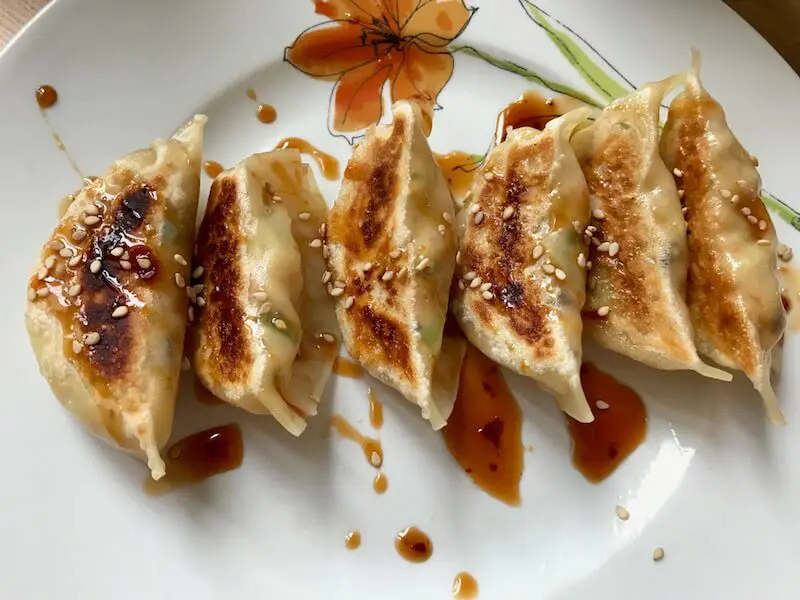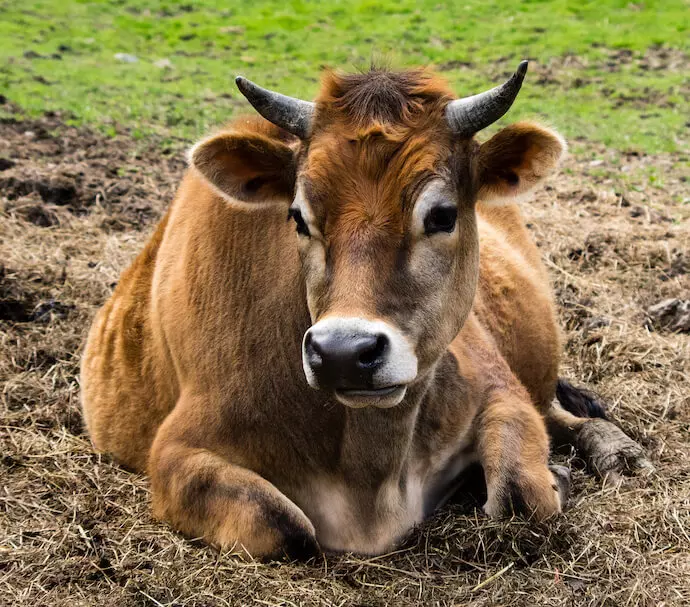First, prepare the filling. Place the prepared vegetables, ginger, and garlic in a medium-large mixing bowl, then crumble in the tofu. Add the sesame oil, tamari, salt, and pepper, then mix well with your hands until the filling nearly starts to hold together. Taste a bit of the filling, and add additional salt if needed.
Next, fill the wrappers. Hold a gyoza wrapper flat on the palm of your left hand, then place a scant tablespoon of filling in the center, flattening the filling slightly. Dip your right index finger in a bowl of water, then moisten the edges of the wrapper, which will help hold it together when sealed. Finally, seal the edges together. (For an excellent tutorial on how to crimp the edges of the gyoza, check out this video!) Place the filled dumpling on a plate or platter, then continue filling the wrappers until the filling is used up. The filled, uncooked dumplings can be frozen at this point, ready to cook at a later date.
When ready to cook the gyoza, heat a large nonstick skillet over medium-high heat. Add 1 tablespoon grapeseed oil and swirl to coat. Place the gyoza in the pan, sealed edge facing up, allowing enough space so that they're not touching: depending on the size of your pan, you'll probably be able to cook about 10 to 14 at once. Allow to cook, uncovered, until the bottoms of the gyoza are golden brown, about 3 to 4 minutes.
Pour in 1/4 cup water, then cover with a tight-fitting lid and allow to steam undisturbed for 3 minutes. Remove the lid and cook for an additional 2 to 3 minutes, until any excess water has evaporated and the bottoms of the gyoza are a dark golden brown and crispy. Remove the cooked dumplings and repeat the process until all gyoza are cooked.
To serve, arrange on a serving platter or individual plates, drizzle with teriyaki sauce, and sprinkle with sesame seeds. The gyoza taste best served warm or at room temperature.










